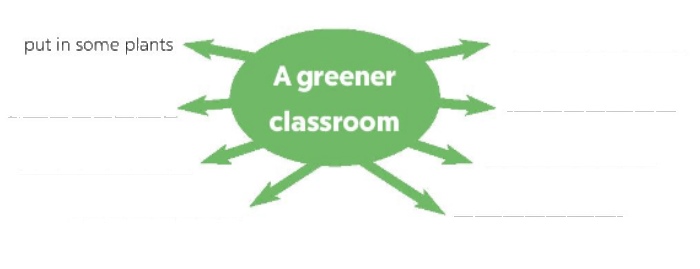Đừng bỏ lỡ những tính năng hấp dẫn của Baitap365.com
Unit 11: Our Greener World
E. Writing - Unit 11. Our Greener World - SBT Tiếng Anh 6 - Global Success (Kết nối tri thức)
B. Vocabulary & Grammar - Unit 12. Robots - SBT Tiếng Anh 6 - Global Success (Kết nối tri thức) D. Reading - Unit 11. Our Greener World - SBT Tiếng Anh 6 - Global Success (Kết nối tri thức) C. Speaking - Unit 11. Our Greener World - SBT Tiếng Anh 6 - Global Success (Kết nối tri thức) B. Vocabulary & Grammar - Unit 11. Our Greener World - SBT Tiếng Anh 6 - Global Success (Kết nối tri thức) A. Pronunciation - Unit 11. Our Greener World - SBT Tiếng Anh 6 - Global Success (Kết nối tri thức)E. Writing - Unit 11. Our Greener World - SBT Tiếng Anh 6 - Global Success (Kết nối tri thức)
Tổng hợp các bài tập phần: E. Writing - Unit 11. Our Greener World - SBT Tiếng Anh 6 - Global Success (Kết nối tri thức)
Bài 1
1. Make sentences using the words and phrases below to help you
(Đặt câu sử dụng các từ/ cụm từ dưới đây để giúp em)
1. Pack / lunch / lunch box / instead / plastic bag.
2. Use / own bag / when / go shopping.
3. Turn off / light / when / not use.
4. Donate / old clothes / or / exchange / friends.
5. Turn off / tap/ when / brush / teeth.
Bài 2
2. Complete the network with ideas to make your classroom a greener one. The first one has been done as an example.
(Hoàn thiện sơ đồ với các ý tưởng để làm cho lớp học của bạn trở nên xanh hơn. Cái đầu tiên đã được thực hiện như một ví dụ)

Bài 3
3. You and your friends in class want to make your classroom a greener place. Write a paragraph to tell what you can do. Use the ideas you have in 2.
(Bạn và các bạn trong lớp muốn biến lớp học của mình trở thành một nơi xanh hơn. Viết một đoạn văn để nói những gì bạn có thể làm. Sử dụng những ý tưởng bạn có trong 2)

There are some things we can do to make our classroom a greener place.
Firstly,___________________
Mẹo tìm đáp án nhanh
Search Google: "từ khóa + baitap365" Ví dụ: "Bài 5 trang 13 SGK Vật lí 12 baitap365